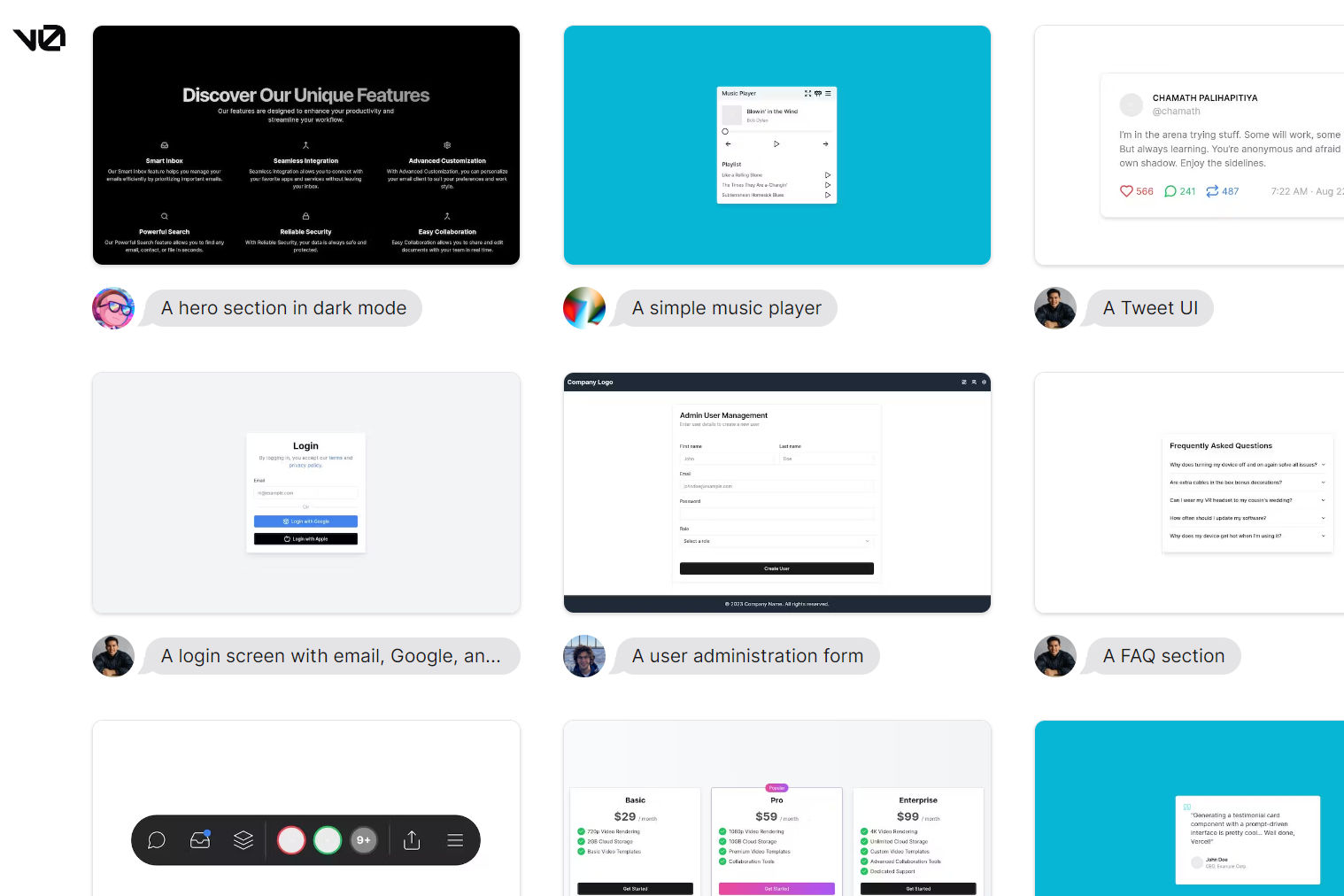 AI
AI
 AI
AI
 AI
AI
Front-end application development platform startup Vercel Inc. today announced the beta launch of v0, a powerful generative artificial intelligence tool that makes it easy for developers to build front-end components rapidly.
With v0, web developers can rapidly build components and web interfaces as simply as writing prompts in plain English and then copy HTML or React code. Today, v0 is coming out of a private alpha test mode and will gradually become available to users on the waitlist.
Lee Robinson, vice president of developer experience at Vercel, told SiliconANGLE that customers are quick to adopt frameworks and tools that improve product experience that use AI chat interfaces. The company helped this along by offering a software development kit that allowed them to connect to large language models and stream conversations, eventually building it into a capability that could stream entire components.
“We then heard from customers that they wanted a higher-level abstraction from creating interfaces with natural language,” said Robinson. “A product for anyone to quickly create a fast, beautiful web application with simple text prompts. That’s how v0 and Generative UI were born. You can think of v0 like ChatGPT for building websites.”
Using v0, users will be able to select each portion and have the generative UI augment each portion of the component to change the fonts and the individual components with follow-up prompts. The underlying code can also be modified as they go, including the HTML, Tailwind CSS React and Radix that control the scripting underneath.
The objective of this new tool is to provide developers with everything they need to develop attractive front-end designs based on their own natural language prompts and then be able to converse with the AI model to make them better. After developers are satisfied, they can export the code, and it’s good enough that they can take it into production right there or customize it as they see fit.
Alpha users have already created numerous different complex websites using the v0 tool on v0.dev that users can look at to see what its powerful interface is capable of. It can make entire website interfaces that are extremely complex, such as a notetaking app with a UI that looks like Apple Inc.’s with a yellow theme color (including this prompt) or rig up simple buttons with different colors that can be embedded.
“We believe Generative UI should be built on top of open-source tools,” said Robinson. “We want to give developers a solid foundation for the v0 of their application, allowing them to reuse their existing web development skills.”
Robinson said v0 was built on top of accessible primitives from the Radix UI library because it abstracts common best practices for authoring interfaces and makes it easier to build experiences and products across platforms. He added that all Radix elements have been tested across browsers and assistive technologies.
“However, using strong primitives is not enough,” he said. “We recommend all generated UI from v0 to be ran though popular accessibility tools like axe and Lighthouse, as well as undergo manual testing, to ensure an accessible end user experience.”
Vercel has been focused on bringing AI to its development community, releasing the Vercel AI software development kit in June, which provides a streaming-enabled kit for apps build on React and Svelte. Using the software, font-end developers canquickly connect their apps to stream AI responses from models such as OpenAI LP’s GPT4, Hugging Face Inc. and others using JavaScript and TypeScript. Originally the SDK allowed for just streamed text, but it was quickly updated to stream components as well.
The company also launched an AI accelerator program for early-stage startups, bringing them the expertise and resources needed to launch products that use the technology.
The new generative UI capabilities of v0 are gradually rolling out to beta waitlist users right now, accessible through the v0 website. Vercel will use feedback from beta participants to refine the v0 model and its capabilities. The service will be available in a free plan and additional paid plans will be available added features, including the option to purchase more credits for on-demand service as needed.
In the long term, Robinson said, the company built v0 to enhance development, in contrast to worries that AI tools will displace developers.
“Developers who have been using v0 in the private alpha have been able to build the first version of their products faster — and with higher quality,” Robinson said. “Creating a website should be as easy as writing down your ideas. We imagine a world where you can tell a story, adjusting and iterating on the narrative, to create something beautiful without days or weeks of developer effort.”
THANK YOU